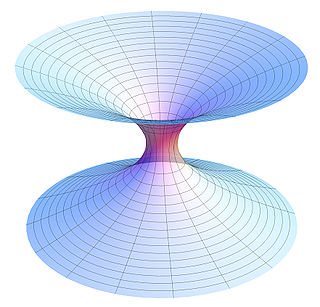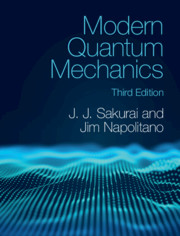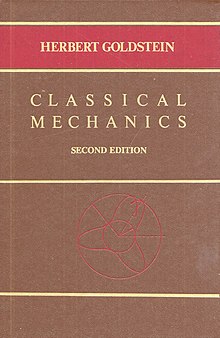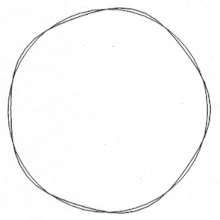Mechanics is the area of mathematics and physics concerned with the relationships between force, matter, and motion among physical objects. Forces applied to objects result in displacements, which are changes of an object's position relative to its environment.
In physics, action is a scalar quantity that describes how the balance of kinetic versus potential energy of a physical system changes with trajectory. Action is significant because it is an input to the principle of stationary action, an approach to classical mechanics that is simpler for multiple objects. Action and the variational principle are used in Feynman's quantum mechanics and in general relativity. For systems with small values of action similar to Planck's constant, quantum effects are significant.
In mathematics and classical mechanics, canonical coordinates are sets of coordinates on phase space which can be used to describe a physical system at any given point in time. Canonical coordinates are used in the Hamiltonian formulation of classical mechanics. A closely related concept also appears in quantum mechanics; see the Stone–von Neumann theorem and canonical commutation relations for details.
In theoretical physics and applied mathematics, a field equation is a partial differential equation which determines the dynamics of a physical field, specifically the time evolution and spatial distribution of the field. The solutions to the equation are mathematical functions which correspond directly to the field, as functions of time and space. Since the field equation is a partial differential equation, there are families of solutions which represent a variety of physical possibilities. Usually, there is not just a single equation, but a set of coupled equations which must be solved simultaneously. Field equations are not ordinary differential equations since a field depends on space and time, which requires at least two variables.

Herbert Goldstein was an American physicist and the author of the standard graduate textbook Classical Mechanics.
In physics, mechanics is the study of objects, their interaction, and motion; classical mechanics is mechanics limited to non-relativistic and non-quantum approximations. Most of the techniques of classical mechanics were developed before 1900 so the term classical mechanics refers to that historical era as well as the approximations. Other fields of physics that were developed in the same era, that use the same approximations, and are also considered "classical" include thermodynamics and electromagnetism.

Gravitation is a widely adopted textbook on Albert Einstein's general theory of relativity, written by Charles W. Misner, Kip S. Thorne, and John Archibald Wheeler. It was originally published by W. H. Freeman and Company in 1973 and reprinted by Princeton University Press in 2017. It is frequently abbreviated MTW. The cover illustration, drawn by Kenneth Gwin, is a line drawing of an apple with cuts in the skin to show the geodesics on its surface.

General Relativity is a graduate textbook and reference on Albert Einstein's general theory of relativity written by the gravitational physicist Robert Wald.
In classical mechanics, a physical system is termed a monogenic system if the force acting on the system can be modelled in a particular, especially convenient mathematical form. The systems that are typically studied in physics are monogenic. The term was introduced by Cornelius Lanczos in his book The Variational Principles of Mechanics (1970).

Classical mechanics is a physical theory describing the motion of macroscopic objects, from projectiles to parts of machinery and astronomical objects, such as spacecraft, planets, stars, and galaxies. The "classical" in "classical mechanics" does not refer to classical antiquity, as it might in, say, classical architecture. On the contrary, the development of classical mechanics involved substantial change in the methods and philosophy of physics. Instead, the qualifier distinguishes classical mechanics from physics developed after the revolutions of the early 20th century, which revealed limitations of classical mechanics.

Theoretical physics is a branch of physics that employs mathematical models and abstractions of physical objects and systems to rationalize, explain and predict natural phenomena. This is in contrast to experimental physics, which uses experimental tools to probe these phenomena.

In physics, a gauge theory is a type of field theory in which the Lagrangian, and hence the dynamics of the system itself, do not change under local transformations according to certain smooth families of operations. Formally, the Lagrangian is invariant.

The Course of Theoretical Physics is a ten-volume series of books covering theoretical physics that was initiated by Lev Landau and written in collaboration with his student Evgeny Lifshitz starting in the late 1930s.

In physics, a field is a physical quantity, represented by a scalar, vector, or tensor, that has a value for each point in space and time. For example, on a weather map, the surface temperature is described by assigning a number to each point on the map; the temperature can be considered at a certain point in time or over some interval of time, to study the dynamics of temperature change. A surface wind map, assigning an arrow to each point on a map that describes the wind speed and direction at that point, is an example of a vector field, i.e. a 1-dimensional (rank-1) tensor field. Field theories, mathematical descriptions of how field values change in space and time, are ubiquitous in physics. For instance, the electric field is another rank-1 tensor field, while electrodynamics can be formulated in terms of two interacting vector fields at each point in spacetime, or as a single-rank 2-tensor field.

The Feynman Lectures on Physics is a physics textbook based on a great number of lectures by Richard Feynman, a Nobel laureate who has sometimes been called "The Great Explainer". The lectures were presented before undergraduate students at the California Institute of Technology (Caltech), during 1961–1963. The book's co-authors are Feynman, Robert B. Leighton, and Matthew Sands.

Classical Mechanics is a well-established textbook written by Thomas Walter Bannerman Kibble and Frank Berkshire of the Imperial College Mathematics Department. The book provides a thorough coverage of the fundamental principles and techniques of classical mechanics, a long-standing subject which is at the base of all of physics.

A History of the Theories of Aether and Electricity is any of three books written by British mathematician Sir Edmund Taylor Whittaker FRS FRSE on the history of electromagnetic theory, covering the development of classical electromagnetism, optics, and aether theories. The book's first edition, subtitled from the Age of Descartes to the Close of the Nineteenth Century, was published in 1910 by Longmans, Green. The book covers the history of aether theories and the development of electromagnetic theory up to the 20th century. A second, extended and revised, edition consisting of two volumes was released in the early 1950s by Thomas Nelson, expanding the book's scope to include the first quarter of the 20th century. The first volume, subtitled The Classical Theories, was published in 1951 and served as a revised and updated edition to the first book. The second volume, subtitled The Modern Theories (1900–1926), was published two years later in 1953, extended this work covering the years 1900 to 1926. Notwithstanding a notorious controversy on Whittaker's views on the history of special relativity, covered in volume two of the second edition, the books are considered authoritative references on the history of electricity and magnetism as well as classics in the history of physics.

Modern Quantum Mechanics, often called Sakurai or Sakurai and Napolitano, is a standard graduate-level quantum mechanics textbook written originally by J. J. Sakurai and edited by San Fu Tuan in 1985, with later editions coauthored by Jim Napolitano. Sakurai died in 1982 before he could finish the textbook and both the first edition of the book, published in 1985 by Benjamin Cummings, and the revised edition of 1994, published by Addison-Wesley, were edited and completed by Tuan posthumously. The book was updated by Napolitano and released two later editions. The second edition was initially published by Addison-Wesley in 2010 and rereleased as an eBook by Cambridge University Press, who released a third edition in 2020.
Action principles lie at the heart of fundamental physics, from classical mechanics through quantum mechanics, particle physics, and general relativity. Action principles start with an energy function called a Lagrangian describing the physical system. The accumulated value of this energy function between two states of the system is called the action. Action principles apply the calculus of variation to the action. The action depends on the energy function and the energy function depends on the position, motion, and interactions in the system: variation of the action allows the derivation of the equations of motion without vector or forces.















